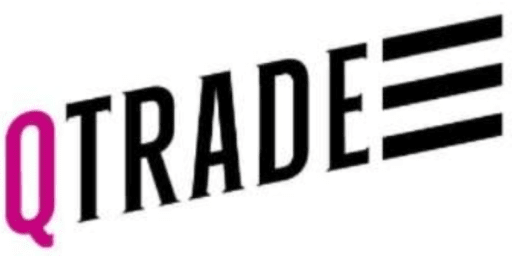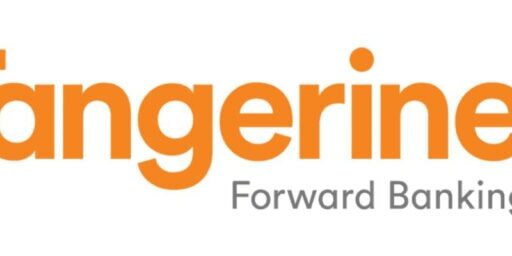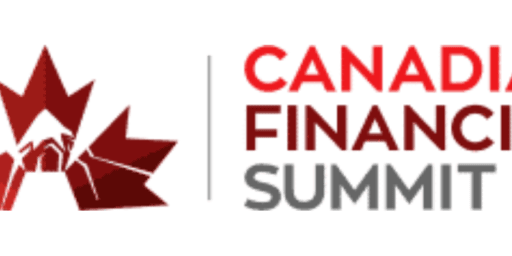Retirement Planning in Canada (RRSP Season)
With “RRSP season” and annual financial goal setting in full swing, Canadian retirement planners are out there in full force ready to “help”.
Honestly, the whole idea of “RRSP season” has always confused me a bit. It seems like we’ve collectively decided as a nation that we’ll squish “New Year’s resolutions” and “caring about money” into the super cold months – and that it gives us permission to ignore pesky financial stuff the rest of the year.
Hey, I get it. Who wants to dive into spreadsheets when the summer sun is shining?!
That said, I think we’d all benefit from brief, non-intimidating “retirement planning check-ins” throughout the year, instead of one-off, “set it and forget it” planning approaches.
If you’re a longtime MDJ reader, then you’re well aware of the limitations we see when it comes to the vast majority of Canadian financial advisors. That said, I’m still stunned by the numbers that come out every year showing how many Canadians are still stuck in the “once-per-year mutual-fund-sales-call” retirement planning model.
What I mean by that, is that most Canadians that bother at all with retirement planning, still think that it’s pretty much taken care of by checking in with their commission-based bank employee or a Canadian wealth management company with a bunch of chain locations.
Every January or February they get an email or a call. They meet face-to-face or chat on the phone for an hour. They get told that they’re doing great, they have to stay the course, maybe look at saving more this year, and here is this fantastic mutual fund that is really doing so well, and gosh-darn you should really get in on this. Oh, and how are the kids, and the local sports team – and by the way, if your friends need any advice, definitely give them my number!
That’s not retirement planning. That’s mutual fund selling. Mutual fund selling is doing fine in Canada. There are lots of people that are very experienced at selling mutual funds, they are very good at it, and they have attended lots of evidence-backed seminars on how to be even more productive at selling mutual funds. I’m not worried about a lack of mutual fund selling.
There is on the other hand a bit of an issue when it comes to creating and updating a more well-rounded retirement plan that incorporates the many aspects of your life that don’t come attached to sales commissions.
Obviously I’m a big fan of DIY retirement planning, being that I created a full-length course on the topic (and have called it the best project I’ve ever done). You can check it out here. That said, a lot of people want a second opinion, or have a few specific questions that they want answered by a professional. We’ll get into how that process should look below.
Canadian Retirement Planning Checklist
Any good retirement plan should include the following elements (and a person shouldn’t be left vaguely aware of them, but instead have a solid specific dollar figure in mind, and understand how they relate to their anticipated retirement budget). Obviously, if you are fortunate enough to be planning a retirement for both you and a partner, you change the below “I” statements, to “we” statements.
- Do I have a retirement spending plan that includes some detail about what I envision my retirement lifestyle looking like? (This plan can be updated and revisited at any time, but unless you know what level of spending you want to target in retirement, the rest of the retirement plan is going to be inaccurate.)
- What can I expect from my workplace pension plan (if I’m fortunate enough to have one)?
- What I can expect from OAS and CPP in retirement based on my current work plans – and do I want to think about how to defer one or both of these options?
- How much will I need to withdraw from my investment portfolio to make up the difference between my retirement spending plan, and my pension + OAS + CPP?
- How do my chosen investments work? Do I fully understand what my money is invested in, and how the fees work on the specific products that I am invested in?
- Should I be saving more, or can I afford to up my standard of living a bit given my retirement goals?
- Do I understand how my tax situation looks today, and what it will likely look like in retirement? Is there opportunity to save or defer on taxes there?
- When should I convert my RRSP to a RRIF?
- What are the rules about unlocking my LIRA?
- How should I take money out of my various retirement investing accounts to pay the least amount of taxes possible?
- Do I have a will?
- If I have substantial assets in place, do I have an estate plan in addition to my will?
- What are my insurance needs today, and what will they look like in retirement?
- Do I have a “bucket list” of one-time expenses like specific holidays or perhaps a large purchase such as an RV or upgraded vehicle?
- Do I have a Just In Case List created?
- Have I considered various home equity options such as downsizing that I may want to explore one day?
- Perhaps working part-time to transition into retirement is an attractive option?
- Hey, maybe I even want to consider retiring abroad outside of Canada?
I just want to reiterate that the retirement plan you have today, doesn’t have to be the one you have tomorrow, or stick to no matter what. It should be a dynamic map that can change as life throws curveballs at you.
My Experience With Retirement Planning
As a high school teacher, I spent a lot of time learning about the theory of, “planning with the end in mind.” In fact, it was entirely too much time, given that it’s a pretty simple idea. After all, you usually don’t plan with the middle in mind right?
But, it constantly amazes me how many people look at retirement planning, and have no idea what the “end” (in this case, your retirement years, not “the end – great tax haven in the sky – the end”) looks like.
It’s a simple truth, but it bears repeating: If you don’t know what your end goal of retirement is going to look like, you can’t possibly have an accurate plan on how to get there.
The thing is, a lot of people that call themselves retirement planners, barely even mention this “plan with the end in mind” process. They might throw around a massive “you need this much” figure (such as BMO’s $1.7 million survey number they tossed out last year) and then apply the pressure to buy the products they get paid a commission to recommend – but that’s it.
Are You Saving Enough for Retirement?

Canadians Believe They Need a $1.7 Million Nest Egg to Retire
Is Your Retirement On Track?
Become your own financial planner with the first ever online retirement course created exclusively for Canadians.
Try Now With 100% Money Back Guarantee*Data Source: BMO Retirement Survey
Instead, I recommend working through several possible scenarios with a fee-only, advice only planner. If you’ve signed up for my course (Called: 4 Steps to a Worry-Free Retirement), you’ll notice that I included several quotes and insights from Jason Heath from Objective Financial Partners.
I honestly think they’re the best retirement planning team in Canada, as they have designated tax accountants on staff, many Certified Financial Planners, and even folks that specialize in tax-efficient estate planning. But mostly, I think they’re the best because Jason is an absolute Canadian expert and their entire team refuses to take any kickbacks on the products they sell. Instead, it’s just a simple quote that will tell you here’s how many hours it will take to help you out, and here’s what you’ll owe us at the end.
I personally use Objective and have recommended several friends and family as well. Everyone has been ecstatic about the help they received. You can check them out by clicking here. Obviously I like to think I had a pretty good idea of how retirement planning worked before I talked to Jason, but it was great to have certain figures confirmed, and specific personal optimizations made. I enjoyed working through a few “alternative scenarios” – sort of like Plan B, C, and D – with a professional who could help me flesh out the pros and cons relative to my initial retirement plan.
As someone who is probably a bit younger than a lot of folks interested in retirement planning, my plan is likely to change as the years go by, but I feel much more confident going forward, as a result of having a specific dollar-denominated plan in place (and not just a vague idea).
Retirement Planning Projections (Transitioning from Accumulation to Decumulation)
One of the hardest things about planning for your retirement is the mental and mathematical switch from accumulation to decumulation. Or, to put it in layman’s terms, to go from saving to spending.
Believe it not, most Canadians that save up for retirement don’t spend their nest egg (or come anywhere close) before they pass away. When I wrote and researched a detailed article on how much Canadians spend in retirement, I was shocked at how conservative most Canadians are when it comes to enjoying their golden years.
I think that hesitation to spend comes from a place of fear. Running out of money in retirement is a really scary reality to envision! Plus, it’s really hard/scary to wrap your head around some of the math involved with taking money out of your nest egg (which can consist of six or more accounts between two partners).
When you compound that logical fear with the mindset shift of going from being a “good worker ant” that has been practicing saving for several decades, to a “spending in retirement grasshopper” – it can all add up to a suboptimal outcome. (Unless you get to inherit all of that unspent money from a loved one – then I guess it’s not a bad deal.)
Running retirement planning projections for various types of retirement scenarios is by far the best way to combat this fear and hesitation. That was the main thing I got from working with Jason and the team at Objective. I knew all about the various tax-saving tactics, and how to efficiently invest my money. I was well-read on the 4% spending rule and various retirement withdrawal strategies. But what I really enjoyed was throwing out some new ideas like, “What if I spent the first 10 years of my retirement in Portugal,” and seeing how that affected the overall financial picture. I now have those graphs and spreadsheets saved, and if I’m fuzzy on something, they’re easy to go back to (versus just a vague once-per-year conversation).
Anecdotally, some of my older family members have found a benefit to their retirement planning projections that I had not anticipated: They spent more money!
Because they had a more thorough understanding of what their long-term outlook was, and what the “worst-case scenario” would actually look like, it actually gave them mental self-permission to go out there and spend a specific number. They could adjust their monthly budget accordingly, and feel guilt-free about spending that amount on whatever brought them the most joy in life.
FAQ – Retirement Planning for Canadian Seniors
I've Completed My Million Dollar Journey. Let Me Guide You Through Yours!
Sign up below to get a copy of our free eBook: Can I Retire Yet?










